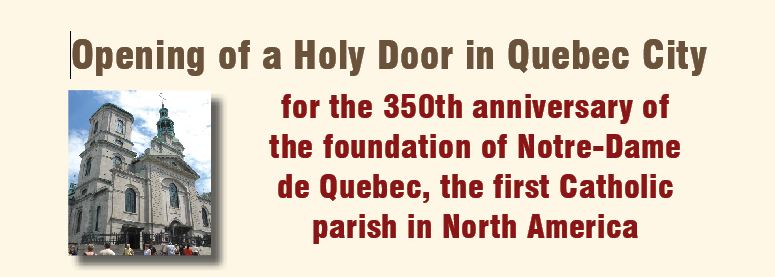
Sunday, December 8, 2013, marked the opening of the Jubilee of the 350th anniversary of the foundation (by Blessed François de Laval, first bishop of Quebec) of Notre-Dame Parish in Quebec City, the first Catholic parish north of Mexico — and the Mother Church of all the parishes of North America. For this occasion the current Archbishop of Quebec, Gerald Cyprien Lacroix, officially inaugurated in his cathedral the seventh Holy Door in the world, which will remain open until the end of the Jubilee, December 28, 2014, feast of the Holy Family.
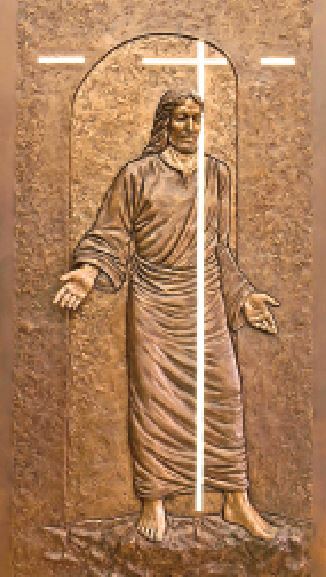 To build a Holy Door is an exceptional privilege authorized only by the Holy See. Up until now there have only existed six other Holy Doors in the world, all of them situated in Europe: Rome has four of them in its Major Basilicas — St. Peter, St Mary Major, St. Paul Outside the Walls and St. John Lateran; in Spain there is one at Santiago (St. James) of Compostela; and in France at Ars, for the occasion of the 150 years since the death of the holy curé of Ars, St. John Mary Vianney, in 2008.
To build a Holy Door is an exceptional privilege authorized only by the Holy See. Up until now there have only existed six other Holy Doors in the world, all of them situated in Europe: Rome has four of them in its Major Basilicas — St. Peter, St Mary Major, St. Paul Outside the Walls and St. John Lateran; in Spain there is one at Santiago (St. James) of Compostela; and in France at Ars, for the occasion of the 150 years since the death of the holy curé of Ars, St. John Mary Vianney, in 2008.
What significance should be given to this Holy Door? In an interview, Archbishop Lacroix explained: “Jesus is the Door (I am the Way, and the Truth, and the Life,” John 14:16). A door is made to accommodate, and the Church, as well as all its members, should accommodate as Christ does. When we cross over this threshold, we should do it in a spirit of pilgrimage, because Jesus always has something to give to us, in order to live a renewal of our faith. During this Jubilee we must celebrate, not only the past, but learn from our founders for the future. Our founders are truly holy men and woman who came here from France, above all, to evangelize; they were officially declared saints and blessed by the Church, they even gave of their lives as martyrs for the Gospel. “ (Canada has officially 12 saints and 13 blesseds, the great majority coming from France to establish the Church in Canada.)
The Holy Door in Notre-Dame Basilica in Quebec was sculptured by Jules Lasalle, the same sculptor who realized the recumbent statue of Bishop Laval located in the basilica/cathedral, facing the Holy Door. The exterior of the door (see picture on the left) represents an open-armed Risen Christ (with his nail wounds). The inside (see picture on the right) depicts the Virgin Mary with parishioners that surround her, and the Holy Spirit hovering above. There is also a luminous cross, which is seen from both sides. At the end of the Jubilee, the door will not be walled up, as is done in Europe, but instead, it will be sealed until permission is granted by the Holy See to re-open it (probably for the Holy Year in 2025). It must be remarked that this Holy Door in Quebec was financed entirely by private donations.
As noted by Archbishop Lacroix, it is estimated that there exists presently 18 million people in North America who can say that their ancestors were baptized or married in the parish of Notre-Dame of Quebec. It is, therefore, an occasion of celebration, not only for the Catholics of Quebec City, but for all of North America.
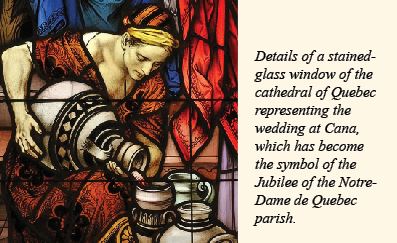 Pope John Paul II in Quebec City in 1984
Pope John Paul II in Quebec City in 1984Why did our ancestors come from France all the way to Canada? It was to establish the Catholic Faith. For example, upon his arrival on North American soil, the first act of Jacques Cartier was to plant the Cross in Gaspé. For this reason, it has been described as the “mystical epic” of the founders of Canada, originally called, “New France”. These were the very words used by Pope John Paul II on the first day of his visit to Canada on September 9, 1984, a visit that, of course, began in Quebec City, cradle of the faith in North America. During his homily in front of more than 275,000 pilgrims gathered on the grounds of Laval University in Quebec City, Pope John Paul II said:
“Today, on Canadian soil, the Bishop of Rome wants to profess this faith with all his heart. He wants to make it the foundation of his mission among you, dear brothers and sisters, here in the City of Quebec and throughout Canada, all of whose regions I shall be visiting.
“It is indeed from here that the Church of Christ began to spread throughout North America. Having set out from France, Jacques Cartier, Champlain and so many others brought to this continent their culture and their language and in doing so contributed to the implanting of faith in Christ the Savior.
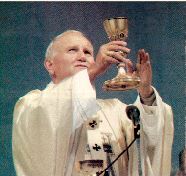 John Paul II celebrating Mass in Quebec City John Paul II celebrating Mass in Quebec City |
“Many were the servants of God, both men and women, who from earliest colonial times came to these shores to contribute to the building up of the Church. Récollet Fathers, Jesuits, Sulpicians, Ursulines with Marie de l’Incarnation and her incomparable spiritual experience, the Hospitalières of Dieppe inspired by the inexhaustible charity of Catherine de Saint-Augustin: these religious men and women were among the first to bear witness to the faith and to the love of Christ among the settlers and “Indians”. Bearers of the word, educators of the young, good Samaritans ministering to the sick; it is they who shaped the face of the Church in this new land. People have spoken of a veritable “mystical epic” beginning with the first half of the 17th century. Some gave their life to the point of martyrdom. Many others joined them, bringing to the work of constructing their own living stone, laboring often in poverty, but made strong by the Spirit of God.
“The vitality and the zeal of your predecessors moved them to carry the Good News further still. May I pay tribute here to a Church, which was quick to reach out to Western Canada, to the Far North, to many other regions of America? More still, it has played a considerable role in the missionary effort of the Universal Church throughout the world. Your motto is “Je me souviens” (I Remember). There are indeed treasures in the memory of the Church as well as in that of a people!
“In every generation, living memory makes it possible for us to recognize the presence of Christ, asking as he did at Caesarea: “And you, who do you say I am?” The answer to this question is fundamental for the future of the Church in Canada and for the future of your culture.
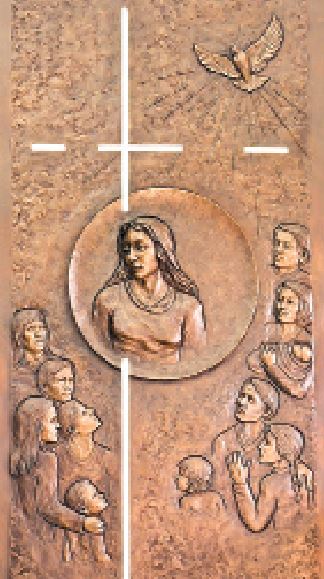 “You realize that your traditional culture characterizing a certain type of “Christendom” has shattered. It is henceforth open to a variety of currents of thought: it must answer innumerable new questions. Science, technology, and the arts take on a growing importance; material values are present everywhere. At the same time there is a greater concern for fostering human rights, for peace, justice, equality, sharing, freedom...
“You realize that your traditional culture characterizing a certain type of “Christendom” has shattered. It is henceforth open to a variety of currents of thought: it must answer innumerable new questions. Science, technology, and the arts take on a growing importance; material values are present everywhere. At the same time there is a greater concern for fostering human rights, for peace, justice, equality, sharing, freedom...
“In this changing society, dear brothers and sisters, you must learn to articulate your faith, and to live it. As I said to your bishops last October: ‘These times are God’s times; he will provide his Church with what it requires as long as it remains open, courageous and prayerful.’
“You will know how to remember your past, the boldness and the loyalty of your predecessors, as you in turn seek to spread the message of the Gospel in new situations. You will know how to develop a new culture that will integrate the modernity of America even while preserving its deep-seated humanity. This latter trait doubtlessly derives from the fact that Christianity nurtured your culture. Do not accept a divorce between faith and culture. You are being called at the present time to a new missionary effort.”
Quebec, which for so long, sent missionaries to evangelize, not only in North America, but also to the entire world, is now one of the most secularized societies in the world. Last November Archbishop Paul Andre Durocher of Gatineau, Quebec, president of the Canadian Conference of Catholic Bishops, at a recent meeting concerning the “continental mission” in the different countries of the Americas, taking place at the Sanctuary of Our Lady of Guadalupe in Mexico, presented a grim but realistic picture of the situation of Christianity in Quebec:
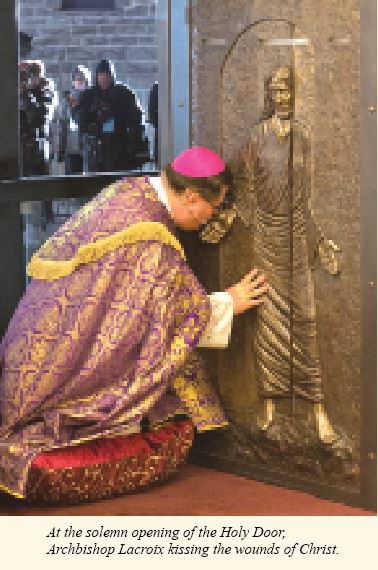 “I am sure you have heard of the great changes that have characterized Quebec society in the past 60 to 70 years. These changes started before the Second Vatican Council. However, the Council coincided with a social revolution in Quebec that led to an unprecedented wave of secularization which has not finished running its course. In many ways, Quebec society can no longer be considered Christian. The popular support for laws authorizing euthanasia and excluding religion from the public sphere is a symptom of this fact. The impact on the Church has been huge. The Church has been barred from our schools. Often, we only see children or youth when there is a Baptism, a First Communion or a Confirmation. Many parishes are closing. Religious orders are simply fading away. Dioceses are cutting staff and programs as they try to adjust to falling revenues.”
“I am sure you have heard of the great changes that have characterized Quebec society in the past 60 to 70 years. These changes started before the Second Vatican Council. However, the Council coincided with a social revolution in Quebec that led to an unprecedented wave of secularization which has not finished running its course. In many ways, Quebec society can no longer be considered Christian. The popular support for laws authorizing euthanasia and excluding religion from the public sphere is a symptom of this fact. The impact on the Church has been huge. The Church has been barred from our schools. Often, we only see children or youth when there is a Baptism, a First Communion or a Confirmation. Many parishes are closing. Religious orders are simply fading away. Dioceses are cutting staff and programs as they try to adjust to falling revenues.”
Confronted with this reality, the Archbishop of Gatineau was still able to identify the “signs of hope”… “new movements and new forms of religious life such as Marie-Jeunesse and the annual Montée-Jeunesse (Youth Summits) are helping young people discover a vibrant, committed Church. Events such as the International Eucharistic Congress of 2008, and the upcoming 350th anniversary in 2014 of the founding in Quebec City of the first parish north of the Spanish Colonies, help reanimate a sense of vitality.”
This situation may seem hopeless, but not for those who believe in God. As Pope John Paul II said in Quebec in 1984: “These times are God’s times; he will provide his Church with what it requires”. God will help us in the same way that he helped our ancestors… as long as we ask him in humility and with confidence.
A visit to the Holy Door implies an entrance and an exit: we enter as disciples of Christ, to have an experience of a renewal in our faith, and we exit as missionaries in the world today.
Pope John Paul II mentioned that saints founded the Church of Quebec and Canada. What is more, most of these saints were canonized during his pontificate. One of the more remarkable among them was Blessed François de Laval, first bishop of Quebec, who was beatified by Pope John Paul II on June 22, 1980. It is worthwhile, therefore, to at least say a few words in this article that will show the extent of holiness that we are dealing with.
The following notes are taken from an article by Lucie Bélinge, in the Notre-Dame du Cap magazine, June-July, 1997 issue:
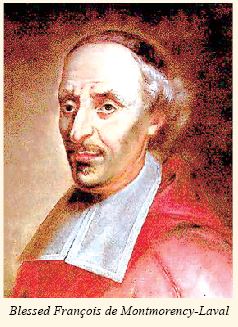 Bishop François de Laval was a skillful administrator, an ardent missionary, a dignified and humble man, and a heroic and prudent mystic. His parents were both of noble birth. His father was a descendant of the Baron de Montmorency, who was a contemporary of Hughes Capet, King of France and founder of the Capetian Dynasty. François had six brothers and sisters. On May 1, 1647, at the age of 24, he was ordained a priest. He was consecrated bishop on the feast day of the Immaculate Conception, December 8, 1658. As he prepared to leave on mission for Tonkin, Viet Nam, he was told that the Jesuits of Quebec, Canada wanted him there. King Louis XIV transmitted their request in writing to the Sovereign Pontiff: “We desire that the Sieur of Laval, bishop of Pétrée, be recognized by all our subjects in New-France, in order to function as bishop.”
Bishop François de Laval was a skillful administrator, an ardent missionary, a dignified and humble man, and a heroic and prudent mystic. His parents were both of noble birth. His father was a descendant of the Baron de Montmorency, who was a contemporary of Hughes Capet, King of France and founder of the Capetian Dynasty. François had six brothers and sisters. On May 1, 1647, at the age of 24, he was ordained a priest. He was consecrated bishop on the feast day of the Immaculate Conception, December 8, 1658. As he prepared to leave on mission for Tonkin, Viet Nam, he was told that the Jesuits of Quebec, Canada wanted him there. King Louis XIV transmitted their request in writing to the Sovereign Pontiff: “We desire that the Sieur of Laval, bishop of Pétrée, be recognized by all our subjects in New-France, in order to function as bishop.”
The bishop had barely arrived in Quebec, when he realized the disastrous results that the over-indulgence of liquor had upon the Indians. The alcohol was imported from France and exchanged with the Indians for furs. Bishop de Laval intervened: the merchants were furious, and incited the people against the bishop. This battle against the sale of liquor lasted twenty years! But finally, in 1679, Bishop de Laval obtained the prohibition from King Louis XIV on the sale of liquor to the Indians. A long, exhausting battle had finally come to an end… though only for a while!
Bishop de Laval’s work consisted, above all, with the organization of religious life, and the construction of schools. His vast diocese extended from Quebec to Acadia and to French Louisiana. He undertook the laborious task of making visits to the people because it was important to him that the Canadian Church be founded on the strength and unity of parishes, schools and family life. His Séminaire de Quebec formed the first political writers, thinkers, and political and religious leaders, who, later, were the ones to fight for the rights of the fatherland after the English conquest.
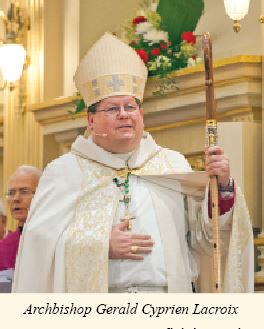 At the death of Bishop de Laval on March 6, 1708, Brother Houssart, who had long served him, published a memoir revealing his highly spiritual and mystical qualities. During the last years of his life, the bishop of Quebec had become significantly handicapped, mainly as a result of his missionary work: “We saw him making long pilgrimages on foot, without any money, begging for his bread while concealing his identity. He wanted to imitate the first apostles of the primitive Church, and he thanked God for having something that he could suffer for His (God’s) love.” In winter or in summer, the valiant bishop travelled tirelessly throughout his immense diocese. Up and down the St. Lawrence River he paddled his flimsy canoe. Wearing his cape over his back, he braved the surprise blasts of wind and snow, travelling on snowshoes to Montreal.
At the death of Bishop de Laval on March 6, 1708, Brother Houssart, who had long served him, published a memoir revealing his highly spiritual and mystical qualities. During the last years of his life, the bishop of Quebec had become significantly handicapped, mainly as a result of his missionary work: “We saw him making long pilgrimages on foot, without any money, begging for his bread while concealing his identity. He wanted to imitate the first apostles of the primitive Church, and he thanked God for having something that he could suffer for His (God’s) love.” In winter or in summer, the valiant bishop travelled tirelessly throughout his immense diocese. Up and down the St. Lawrence River he paddled his flimsy canoe. Wearing his cape over his back, he braved the surprise blasts of wind and snow, travelling on snowshoes to Montreal.
He visited the Hôtel-Dieu of Quebec and took care of the sick, encouraging them and assisting them at their hour of death. This descendant of the first Baron of France arrived at the basilica alone, at 4:00 a.m. every morning, and like a sexton, he opened the doors, rang the bell, and prepared the altar for celebrating the 4:30 a.m. Mass. It was said that he celebrated his Mass like an angel! In his poor room at the Seminary, he slept on boards, putting the straw mattress lent to him by Brother Houssart under his bed. At the time of his death, Bishop de Laval no longer owned anything: he had given all his possessions to the poor. The bishop of New France is a great saint to whom we can still pray in these times when “his fatherland” is still in danger.
Sunday, December 8, 2013, just a few hours before the opening of the Holy Door in Quebec City, Pope Francis spoke of the Jubilee after the Angelus prayer that he prays every Sunday in St. Peter’s Square in Rome:
“Let us join in spirit with the Church in North America which is today remembering the foundation of its first parish Notre-Dame de Quebec 350 years ago. Let us give thanks for the ground covered since then, especially for the saints and martyrs who made those lands fertile. I warmly bless all the faithful celebrating this jubilee.”
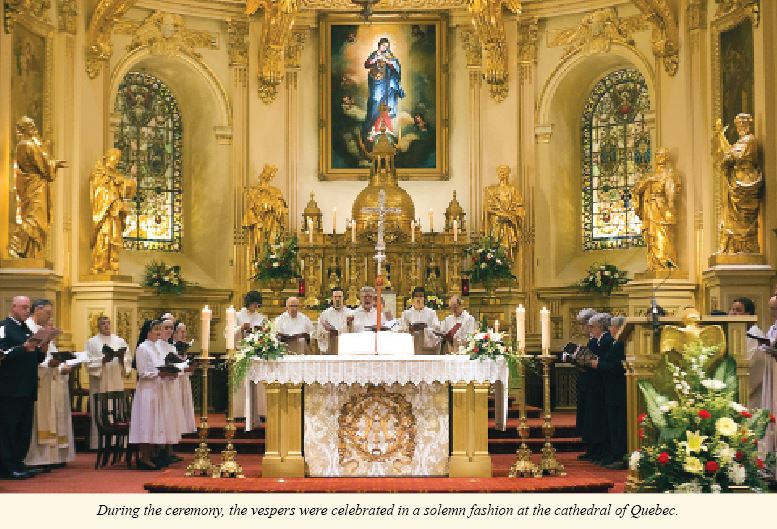
Notre-Dame de Quebec… The 350th anniversary of the foundation of the first parish north of the Spanish colonies, which was founded by Blessed François de Laval, is an exceptional occasion for proposing a Jubilee that will allow each person to encounter Jesus Christ through the inner and personal journey of a pilgrimage. We propose that you listen to the Word of God, that you reflect on it, and that you put it into practice. The stress of everyday life can obstruct the doorway that leads us to Jesus. But the Word of God, the life that is enlightened by the Gospel, puts us in personal and immediate contact with him.
Every human being was created to have life, and to have it abundantly (Cf. Jean 10:10). We firmly believe that God wants everyone to be saved and learn the truth (Cf. 1 Timothy 2:4). God’s will is fulfilled in eternal life; however, we affirm that you can fulfill it now. The Lord offers us a life that is full, fruitful, and happy that we can experience, starting today.
This is why we are inviting you today to open your hearts to the one who said: “Listen! I am standing at the door, knocking” (Revelation 3:20). “Open the doors to the Redeemer” (Cf. John Paul II). He wants to be with us in our everyday lives. Jesus said it himself in the Book of Revelation: “If you hear my voice and open the door, I will come in to you and eat with you, and you with me” (Revelation 3:20). Welcoming God’s love, listening to the Gospel with our hearts (Cf. Psalm 95 (94):7-8), and putting it into practice, celebrating the mysteries of the Incarnation and Redemption, leads us to proclaiming the Good News to all the people of every nation. (...)
It is possible that the Holy Door that we have just opened will simply result in a harmless game of entering and exiting. We as individuals, as a community, as Church, and as a society are blessed to be able to experience this passage. I urge you to prepare your passage. Come cross the threshold of the Holy Door in communion of heart, spirit and flesh with your forefathers who made the crossing to this land. I am here on this continent thanks to my forefathers. You too are here because of your forefathers. Let us embrace our heritage with gratitude and pride.
Let us commune with the bravery and courage of the first to have made the journey. Let us extend our communion to include EVERYONE who has made the journey, the Aboriginal peoples (First Nations and Inuit), those who came from Europe, Africa, and Asia. The Jubilee to which we are inviting you is a celebration, a mission, that opens us up to all of humanity. This implies that everyone build upon their heritage by contributing to the great journey of the world. It is our turn now to be the ones to make the passage!
This moment of communion with the people who have “crossed over” to the New World, will open our eyes and our hearts to the many things of beauty and realisations that we are proud of. It will also open our eyes to much suffering, hardship, and injustice. Yes, the pilgrimage to which we are summoning you is both a time of thanksgiving and reconciliation. This passage through the Holy Door merges the past, the present, and the future with the here and now of our heritage and of our contribution to the coming of the world and Kingdom that God desires.
It is also a time of purification. Let us recall our baptism. That was when we were born into our filial relationship with God, when we died with Christ and rose again with him. Within ourselves and all around us, we are fighting against sin and all that belittles, disfigures, and destroys the Body of Christ. Pope John Paul II reminded us that we are afflicting ourselves with “structures of sin.”
Crossing the threshold of the Holy Door is a sign of repentance and of commitment to a New World, to the “New Jerusalem” which we are experiencing more and more each day through our contribution to its construction. Passing through the Holy Door is a great sign of hope. When people decide to embark on this journey, toward encountering and following Christ, anything becomes possible! A New World can be achieved ! (...)
We are sons and daughters of the Father, his heirs, his partners, his collaborators in the creation of the world, in its redemption, in the deliverance from not only everything that afflicts humanity, but also from everything that makes it beautiful and righteous. Let us allow the Father to tell each and every one of us: “You, my child, are always with me. All that is mine is yours. We must rejoice that the one who had died has come back to life, that the one who was lost has been found” (Cf. Luke 15:31-32).
We are ambassadors of Christ (Cf. 2 Cor 5:20). If we share the mission of Jesus Christ, we too carry our cross daily. We walk in his footsteps so that we may reach humanity’s full potential. With him we witness the world’s lack of understanding and hatred (Cf. John 15:18). But we still trust in him without even being afraid to give our lives for him. He has conquered the world. He will bring us victory (Cf. John 16:33). For now, may the Holy Spirit keep us in peace, joy, and fraternal communion.
Lord, “your love for human beings is so great that you watch over them like a Father, you purify them of their faults with tenderness and patience, and you always lead them back toward their Leader: Christ.” Take us forgiven sinners and make us one with the Body of your Son, heirs of his Kingdom, the Temple of your Spirit. Teach us, through this Jubilee, to live as brothers in your Church, to love and to serve humanity like you, like your Son, and to allow ourselves to be guided by your Holy Spirit. AMEN.